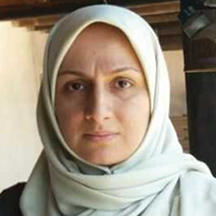In a nutshell
Several countries in the MENA region are among those globally with the highest rates of birth by c-section, including Egypt, Iran and Turkey.
It is well established by research in health economics that financial incentives of doctors play a major role in inducing the demand for certain procedures in the grey areas of medical guidelines.
A healthcare policy in Iran that provided both doctors and patients with financial incentives to opt for vaginal delivery was effective in reducing the rate of c-sections, especially among first-time mothers.
A great portion of medical practice lies in the grey area of medical guidelines where the economic incentives of healthcare providers play a crucial role in the type of treatment that the patient receives.
Different procedures for childbirth are a classic example of a grey area of medicine. Apart from extreme emergency cases where a c-section is inevitably lifesaving, many infants can be born either by vaginal delivery or c-section. But there is no clear cut-off after which the medical guidelines dictate a certain procedure and usually the doctor is responsible for choosing between alternative options. That is why there is a large variation in c-section rates across doctors, hospitals, regions and countries.
In addition, these two childbirth procedures are not exactly equal either for the doctor or for the mother and baby. C-section is usually a highly reimbursed procedure. On the other hand, vaginal delivery is time-consuming, imposes high stress levels, is unpredictable and has more cases of judicial problems.
For these reasons, gynaecologists have a preference for c-section in marginal cases. For example, in a seminal study, Gruber and Owings (1994) show that American gynaecologists compensated the income shock that resulted from the decline in fertility by substituting vaginal deliveries with highly reimbursed c-sections.
But like any other surgery, c-sections have their own risks. The recovery period from c-section is much longer than vaginal delivery for the mother. There are also some risks to the newborn, especially if the c-section is planned unnecessarily earlier than the due date. Therefore, many medical guidelines try to control the c-section rate and target some form of ideal c-section rate in the country.
In our research, we study a large-scale healthcare reform to control the rising c-section rate in Iran, a country that had one of the highest rates in the world. In 2014, 55% of births were delivered by c-section. This compares with the World Health Organization (WHO) recommended rate of 10-15%, the average rate in OECD countries (27%) and in the MENA region (29%).
Iran’s high rate is partly due to medical guidelines that give greater freedom to doctors to induce demand for a certain type of procedure. In addition, doctors were allowed to plan the delivery for the 38th week of the gestation age while many clinical guidelines in developed countries restrict caesarean delivery and labour induction prior to the 39th week. As more than 90% of women go through the natural process of labour after the 38th week of pregnancy, such a high c-section rate is not achievable without planning many deliveries early.
The programme in Iran started on 5 May 2014 in all public hospitals in the country. The c-section rate in public hospitals was lower than the national average, although still reached as high as 47%.
Following the programme, vaginal deliveries became free of charge, the performing doctors received bonus payments for vaginal delivery, and they were subject to an annual quota for the maximum number of caesarean deliveries. If the doctor’s annual c-section rate exceeded 45%, she would not get paid for the extra procedure performed.
In our study, we show that the programme was effective in reducing the c-section rate especially among first-time mothers, who have fewest risk factors for c-section. Their rate dropped from 48% to 35% in less than six months.
We show that the financial incentives of doctors played a crucial role in the effectiveness of the programme. Those doctors who had a very high c-section rate responded sharply to the incentives and they were the driving forces of the reform.
In terms of health outcomes, apart from a slight increase in the gestation age and infant birth weight, we could not observe any other significant effect. After the reform, fewer births were planned early term (that is, at the 38th week of the gestational age), hence we identified the effect on birth weight. But we failed to identify any effect on mortality rate, hospitalisation and other health measures of the infants.
The programme was not harmful in terms of immediate health outcomes, although it had some unintended effects such as shifting high skilled doctors out of public hospitals.
The programme will have long-run effects that are not captured by our analysis of three years around the reform. First, c-section is a persistent procedure; in many medical guidelines, elective repeated c-sections should be discussed with mothers who have had a previous caesarean. So, we expect further reduction in the c-section rate of higher order births.
Second, c-section has a negative effect on the subsequent chances of contraception (Halla et al, 2016). Therefore, the programme will have long-run effects on the fertility rate and labour market decisions of women.
This policy evaluation can be used by other countries that have similar problems in their healthcare sector and intend to control the c-section rate, which is rising in almost all countries. To name a few, Korea, Mexico and Turkey have c-section rates above 45%.
In addition, our study contributes to the well-studied concept of physician-induced demand and its consequences for patients. Medical guidelines should provide the basis for an optimal treatment while compensating the doctors with fair pay rates.
This column is based on a recently published paper: Pilvar, H, and K Yousefi (2021) ‘Changing Physicians’ Incentives to Control the C-section Rate: Evidence from a Major Health Care Reform in Iran’, Journal of Health Economics 102514.
Further reading
Gruber, J, and M Owings (1996) ‘Physician Financial Incentives and Cesarean Section Delivery’, RAND Journal of Economics 27(1): 99-123.
Halla, M, H Mayr, GJ Pruckner and P García-Gómez (2020) ‘Cutting fertility? Effects of cesarean deliveries on subsequent fertility and maternal labor supply’, Journal of Health Economics 72: 102325.



